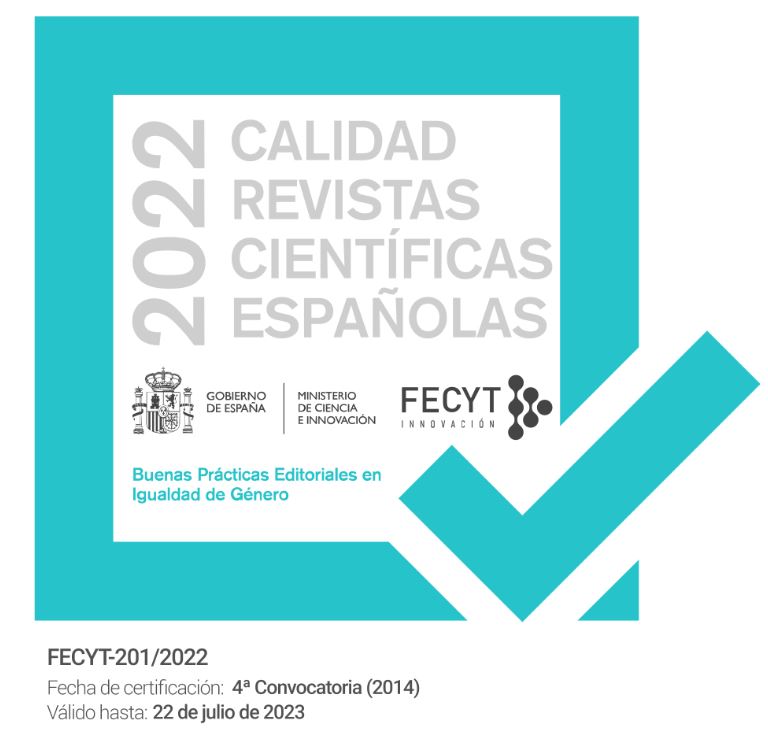The designe of an educative video in the grade of social education as a practice of prosuming
DOI:
https://doi.org/10.30827/eticanet.v21i2.18522Keywords:
Digital natives, social education, educational video, educational technologyAbstract
In the digitalized society we have the opportunity of creating digital content and share ir with the world. From the university field, especially those careers that are training future professionals of education, it is important to encourage the use of digital and media reosources as a teaching-learning tool which can bi produced by the teacher.
This study shows a teaching experience in which the student body of the grade of Social Education of the University of Huelva is motivated to design and produce media material.
This article descibes the educommunicative experience and shows how it is managed by the students, presenting the results of an assessment questionnarire where factors such as coping strategies, the influence of personal variables and the satisfaction/pride with the results ara analyzed.
Among the conclusions, we highlight the starting fear of the students facing the development of an audiovisual material and the importance of the role of the teacher to mitigate that rejection.
Downloads
References
Acosta–Silva, D A. (2017) Tras las competencias de los nativos digitales: avances de una metasíntesis. Revista Latinoamericana de Ciencias Sociales, Niñez y Juventud, 15,(1), 471-489. http://dx.doi.org/10.11600/1692715x.1513014062016.
Aguaded, I (2012) La competencia mediática, una acción educativa inaplazable. Comunicar, 39, 7-8. https://doi.org/10.3916/C39-2012-01-01
Aparici, R y García-Marín, D. (2018) Prosumidores y emirecs: Análisis de dos teorías enfrentadas. Comunicar, 55. 71-79 https://doi.org/10.3916/C55-2018-07
Bonilla del Río, M.; Diego-Mantecón, J M y Lena Acebo, F J. (2018) Estudiantes Universitarios: prosumidores de recursos digitales y mediáticos en la era de internet. Aula Abierta. 47,(3), 319-326. https://doi.org/10.17811/rifie.47.3.2018.319-326
Cabero, J. (1987) Tecnología educativa: diseño y evaluación del medio vídeo en el contexto de las enseñanzas medias. Roles de utilización didáctica, [Tesis doctoral, Universidad de Sevilla]. https://idus.us.es/handle/11441/87272
Cabero, J. (2007). El video en la enseñanza y la formación. En J. Cabero (coord.) Nuevas tecnologías aplicadas a la educación (pp. 129-150). McGraw-Hill. https://uogestiondelaprendizaje.files.wordpress.com/2015/03/5-libro-nuevas-tecnologc3adas-aplicadas-a-la-educacic3b3n-julio-cabero.pdf
Castellanos, A., Sánchez, C. y Calderero, J. F. (2017). Nuevos modelos tecnopedagógicos. Competencia digital de los alumnos universitarios. Revista Electrónica de Investigación Educativa, 19(1), 1-9. https://doi.org/10.24320/redie.2017.19.1.1148
Catalán-Matamoros, D. (2020). La comunicación sobre la pandemia del COVID-19 en la era digital: manipulación informativa, fake news y redes sociales. Revista Española de comunicación en salud, 5-8. https://doi.org/10.20318/recs.2020.5531
Corpas, J. (2004) La utilización del vídeo en el aula de ELE. El componente cultural. RedEle. Revista electrónica de didáctica del español como lengua extranjera, (1). https://www.educacionyfp.gob.es/dctm/redele/Material-RedEle/Revista/2004_01/2004_redELE_1_03Corpas.pdf?documentId=0901e72b80e0680f
Cloutier, J. (1973). La communication audio-scripto-visuelle à l’heure des self média. Les Presses de l’Université de Montreal.
Delgado, P., Illanes, R., Lucio-Villegas Ramos, E L (2020) Políticas educativas en tiempos de coronavirus. Laplage em Revista, 6, (2): 4-6. https://doi.org/10.24115/S2446-6220202062904p.4-6
Duarte, A y Mojarro, A. (2014) El video educativo (Educlip) como recurso para la alfabetización mediática. Comunicación y Pedagogía, (273-274), 93-98
Duarte, A y Mojarro, A. (2015) Educlips: análisis del vídeo como herramienta de apoyo a la enseñanza universitaria. Revista Educaçao Cultura e Sociedade, 5, (2), 41-53. http://rabida.uhu.es/dspace/bitstream/handle/10272/15300/EDUCLIPS.pdf?sequence=2
Ferrés I Prats, J. (1988) Cómo integrar el video en la escuela. CEAC.
Jordán, D; Arias, C y Samaniego, G. (2017) La participación del prosumidor en la nueva era de la comunicación. INNOVA Research Journal, 2, (11), 179-185. https://doi.org/10.33890/innova.v2.n11.2017.556
Liesa, M.; Vázquez S. y Lloret, J. (2016) Identificación de las fortalezas y debilidades de la competencia digital en el uso de aplicaciones de internet del alumno de primer curso del Grado de Magisterio. Revista Complutense de Educación. 27(2), 845-862.
Marín Casanovas, J.A. (2019). Posverdad y fake news ¿Moda o modo?. Ámbitos: revista de estudios de ciencias sociales y humanidades, (41), 105-111.
McDougall, J.; Brites, MJ; Couto MJ y Lucas, C. (2019) Digital literacy, fake news and education. Culture and Education, 31(2), 203-212. https://doi.org/10.1080/11356405.2019.1603632
Rodríguez, M.M. y Melgarejo, I. (2012) El Educomunicador: un profesional necesario en la Sociedad Multipantalla. Sphera Pública, (12), 143-159
Toffler, A. (1980) The Third Wave. Bantam Books.
Published
Issue
Section
License
The authors who publish in this journal agree to the following terms: The authors retain the copyright and grant the journal the right to be the first publication of the work as well as licensed under a Creative Commons Attribution License that allows others to share the work with an acknowledgment of the authorship of the work and the initial publication in this magazine. Authors are allowed and encouraged to disseminate their work electronically (for example, in institutional repositories or on their own website) before and during the submission process, as it may lead to productive exchanges as well as further citation. Earliest and greatest of published works (See The Effect of Open Access).













